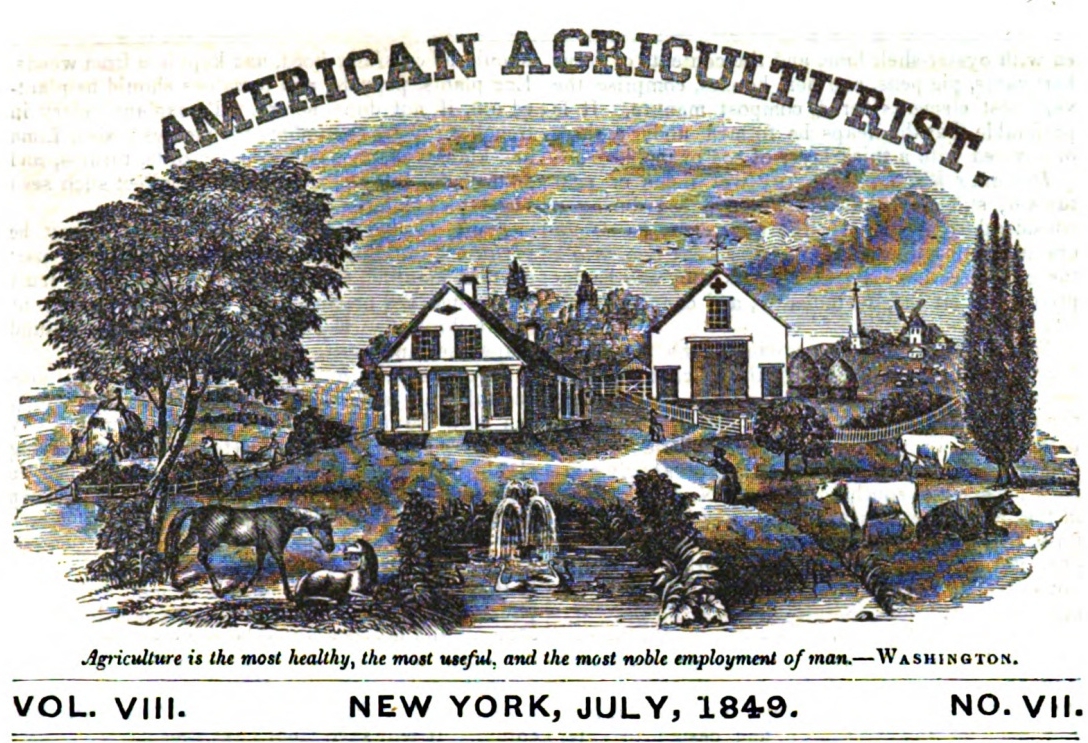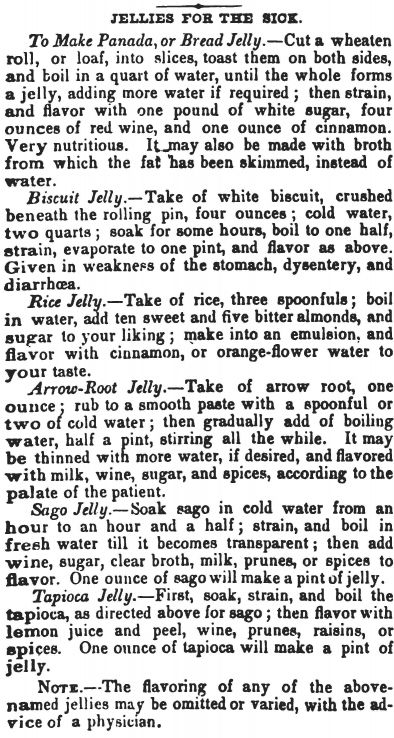
Foodie Friday: Curious Cookery of the 19th Century - Bread Jelly
We continue our examination of odd food descriptions and recipes found in various 19th century agricultural publications. Below is a recipe for bread jelly from the American Agriculturist, July 1849, p. 225:
To Make Panada, or Bread Jelly.--Cut a wheaten roll, or loaf, into slices, toast them on both sides, and boil in a quart of water, until the whole forms a jelly, adding more water if required; then strain, and flavor with one pound of white sugar, four ounces of red wine, and one ounce of cinnamon. Very nutritious. it may also be made with broth from which the fat has been skimmed, instead of water.
This recipe fell under the heading "Jellies for the Sick," which also included recipes for biscuit jelly, rice jelly, arrow-root jelly, sago jelly, and tapioca jelly. The article concluded with the following note: "The flavoring of any of the above-named jellies may be omitted or varied, with the advice of a physician."
Today there are a variety of online recipes for "panada," which is considered more of a soup or a sauce.
If you would like to look at an original print copy of the American Agriculturist, you can do so at the NC State University Libraries' Special Collections Research Center. Just contact us through our online form and provide the call number: S1 .A4 v.8(1849).
